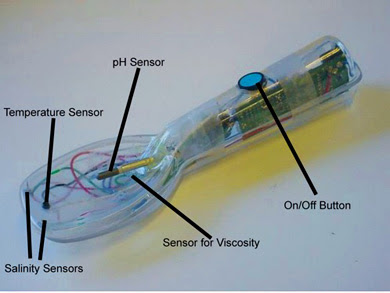After presenting the 1/X concept , Toyota has proved again that they are the pioneer in the field of the future cars. It seems that they are going to utilise each and every space of this car , so that unneccessary space can be avoided.They are trying to reduced the weight of the car also so that we a get good fuel milege in a result.
It seems like every other day now that a car company announces a new concept that is redefining what it means to be an environmentally friendly vehicle. However, when Toyota says it, we tend to take a closer look. It was Toyota, after all, that created the Prius, the standard to which all subsequent hybrid vehicles are measured. The Toyota 1/x concept, which recently appeared at the Chicago Auto Show, is Toyota’s latest attempt at redefining what a green vehicle means. And to them, it is all about making it weigh less.

The name 1/X refers to the reduced amount of weight, emissions and fuel consumption that the vehicle has compared to that of other similar vehicles in its class. It is made from a carbon fiber reinforced plastic frame, that is quite strong but much lighter than conventional framing system. The shape of the vehicle is a result of a desire by Toyota’s designers to create a smaller space, that would have a feeling of openness. It has the same amount of space as a Prius, yet weighs about a third

Toyota is looking for more ways to squeeze every inch from a gallon of gas possible. This 1/X concept design was built from the ground up with light weight materials, with which they hope to double the Prius’ already impressive mileage ranking. Some interesting choices can be found overhead. The roof is transparent, heat and noise insulating, and made from a bio-plastic derived from kenaf and ramie plants. The wheels are thinner than normal cars due to its extreme light weight.This design, combined with the lightness of the car means that it can travel for over 600 miles on a four-gallon tank of fuel. Pretty impressive effort from Toyota, one of the only companies successfully marketing hybrids today.

The roof is transparent, heat and noise insulating, and made from a bio-plastic derived from kenaf and ramie plants. The seats of the vehicle are extremely light, yet, according to Toyota, quite comfortable. The entire front of the vehicle is clad in an LED lighting system that provides a soft glow, illuminating the entire front surface of the vehicle. And, due to the light weight of the vehicle, the 1/X’s wheels are smaller and thinner than those of a regular vehicle. They have even reduced the amount of water splashed by the tires when traveling on wet surface.

The aerodynamic shape of the 1/X and unique cabin design result in smaller pillars, allowing passengers more visibility and helping to create a greater sense of openness and freedom with its outer surroundings for driver and passengers.The 1/X roof is produced from a bio-plastic made from environmentally-responsible material derived from kenaf and ramie plants. The result is a roof that improves heat insulation, emits less carbon dioxide, increases the amount of light entering the cabin, and reducing noise.
On the inside, the 1/X employs four ultra-lightweight seats made of polyester fiber that is knitted three-dimensionally for added comfort. The material functions like a spring or damper that helps create a cushion-like feel for all occupants


The 1/x is meant to operate at a fuel efficiency that is double that of the Prius. It comes with a plug-in hybrid unit and a small fuel-engine. This design, combined with the lightness of the car means that it can travel for over 600 miles on a four-gallon tank of fuel. Overall, a pretty impressive technology package from Toyota
Source:http://www.inhabitat.com/2008/04/08/transportation-tuesday-toyotas-lightweight-1x-concept/




















 The spheres would be made of a thin, strong fabric (such as Vectran, which was used for the landing balloons that cushioned the impact for the Mars Exploration Rovers) and coated with a very thin layer of a conductor such as gold. The fabric spheres could be folded up for transport and then inflated by simply loading them with an electric charge; the like charges of the electrons in the gold layer repel each other and force the sphere to expand outward.
The spheres would be made of a thin, strong fabric (such as Vectran, which was used for the landing balloons that cushioned the impact for the Mars Exploration Rovers) and coated with a very thin layer of a conductor such as gold. The fabric spheres could be folded up for transport and then inflated by simply loading them with an electric charge; the like charges of the electrons in the gold layer repel each other and force the sphere to expand outward.











